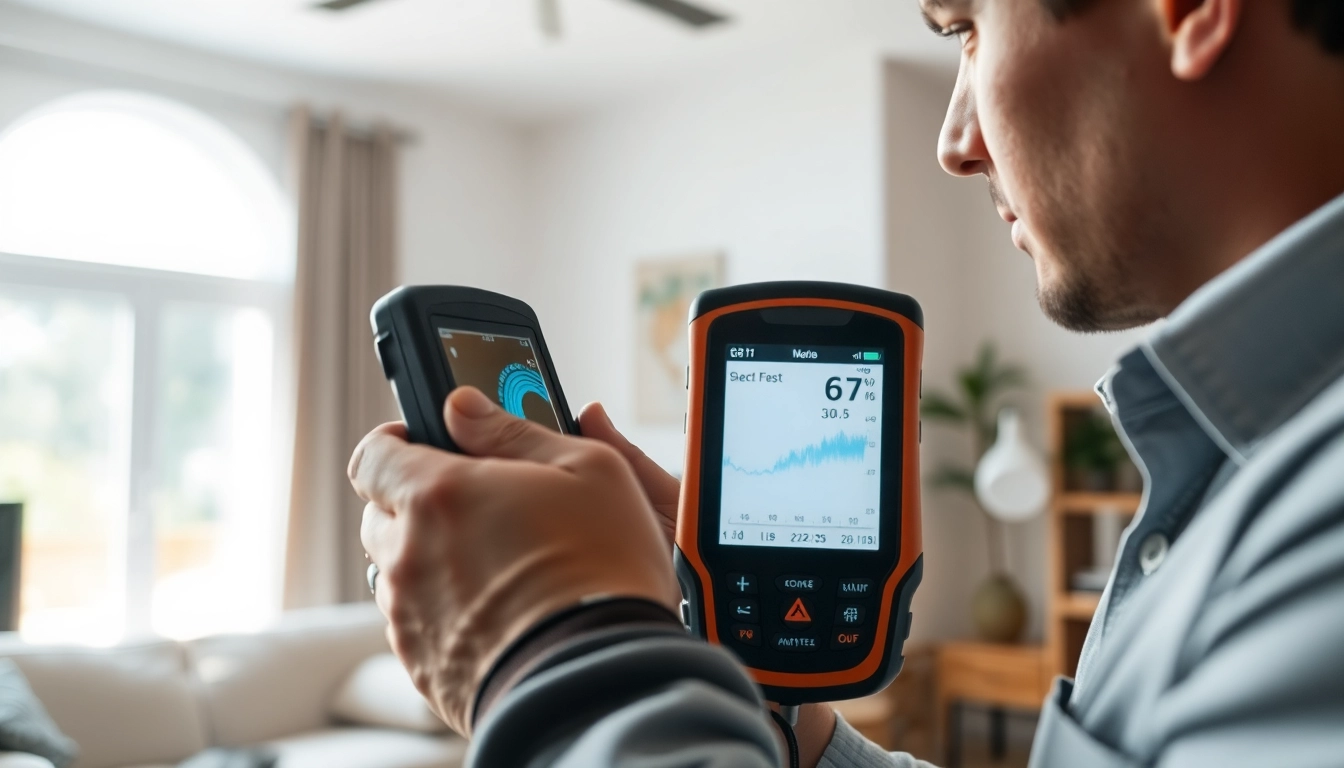What is a Duct Leakage Test?
Definition and Purpose
A duct leakage test is a procedure designed to measure the amount of air that escapes through the ductwork of heating, ventilation, and air conditioning (HVAC) systems. This test is essential for identifying inefficiencies in airflow, which can result in wasted energy and decreased indoor air quality. The primary purpose of a duct leakage test is to quantify leaks in the system, allowing homeowners and HVAC professionals to address these issues effectively and improve overall system performance.
Importance of Indoor Air Quality
Indoor air quality (IAQ) is a critical component of any building’s environment. Poor IAQ can lead to various health problems, including respiratory issues, allergies, and other chronic diseases. Duct leakage can significantly compromise IAQ by allowing pollutants, dust, and other harmful particles to enter the airflow that circulates throughout a home or building. Conducting a Duct leakage test helps ensure that the duct system is sealed effectively, limiting the entry of contaminants and promoting a healthier living environment.
Basic Components of the Test
The duct leakage test typically involves a few basic components, including:
- Pressure Measurement: The test measures the pressure in the duct system while the blower fan is operating.
- Flow Rate Calculation: This component involves calculating the airflow through the ducts to identify how much air is escaping.
- Leakage Rate Determination: The results provide a tangible measure of leakage rate, typically expressed in cubic feet per minute (CFM), which helps gauge the system’s efficiency.
How is a Duct Leakage Test Conducted?
Step-by-Step Testing Process
The duct leakage testing process is systematic and can be broken down into the following steps:
- Preparation: Before the test, all supply and return registers are sealed with plastic wrap, ensuring that no additional air is able to enter or exit during the test.
- Equipment Setup: A calibrated blower door fan is installed at the location of the air handler, which creates a pressure difference in the duct system.
- Testing: The fan is activated to draw air from the ducts, and the pressure inside the ducts is monitored.
- Data Collection: Measurements are taken to analyze air pressure and flow rates, determining the total leakage rate of the duct system.
- Analysis: The data is analyzed to identify areas of concern and recommend actions for sealing and maintenance.
Tools Required for Testing
Conducting a duct leakage test requires specialized tools to ensure accurate measurements. These include:
- Blower Door Fan: This fan is crucial for creating a pressure differential within the duct system.
- Manometer: A digital manometer measures air pressure within the ducts, and it is essential for calculating leakage rates.
- Sealant Materials: Depending on the results, sealant may be necessary for addressing identified leaks.
Common Techniques Used
Several techniques can be employed during duct leakage testing:
- Pressurization Testing: This approach pressurizes the duct system to check how much air escapes under pressure.
- Depressurization Testing: This method pulls air out of the duct system to measure the intake of outside air through leaks.
- Infrared Scanning: This technique employs thermal imaging to identify spots in the ductwork where heat loss due to leaks is occurring.
Benefits of Conducting a Duct Leakage Test
Energy Efficiency and Cost Savings
One of the most significant benefits of conducting a duct leakage test is the potential for energy savings. Leaky ducts can cause HVAC systems to work harder, leading to increased energy consumption and higher utility bills. By identifying and sealing leaks, homeowners can improve the system’s energy efficiency, leading to long-term cost savings on heating and cooling costs.
Improvement of HVAC Performance
Sealing duct leaks can greatly enhance HVAC system performance. Well-sealed ducts ensure that heated or cooled air reaches its intended destination without loss. This efficiency not only improves comfort levels within the home but also extends the lifespan of the HVAC equipment by reducing strain and wear-and-tear.
Health Benefits Related to Air Quality
Improving indoor air quality is another crucial advantage of conducting a duct leakage test. By sealing leaks, the system can more effectively filter out pollutants and allergens, resulting in a cleaner, healthier indoor environment. This aspect is particularly important for children, the elderly, and individuals with existing health conditions.
Interpreting Duct Leakage Test Results
Understanding Leak Measurements
Duct leakage results are typically expressed in CFM at a specified pressure. Understanding these measurements is essential for homeowners and technicians alike. For instance, a leakage rating below 5% of total airflow is considered acceptable, while anything above that may indicate a need for sealing. Breakdown of results into supply versus return duct leakage can also provide insights into which areas need more attention.
Identifying Common Issues
Interpreting the data can help identify common issues related to duct leakage, such as:
- Improperly sealed joints and connections
- Pinched or collapsed ductwork
- Inadequate insulation
Understanding these issues allows for targeted remediation rather than a blanket approach to repairs.
Next Steps for Homeowners
Upon receiving duct leakage test results, homeowners should follow a series of steps:
- Consult with a Professional: Discuss the findings with an HVAC professional who can provide insight and recommendations.
- Prioritize Repairs: Focus on the most significant leaks first to maximize efficiency and cost savings.
- Consider Future Testing: Schedule regular maintenance and follow-up tests to ensure that the system remains efficient.
Best Practices for Maintaining Duct Systems
Regular Testing and Maintenance
Routine testing and maintenance of duct systems are vital to sustaining their efficiency and performance. Homeowners should aim to schedule duct leakage tests every few years or in conjunction with other HVAC maintenance activities. Regular checks ensure that any leaks are identified and addressed promptly, reducing potential energy losses over time.
Choosing Proper Insulation
Proper insulation plays a critical role in duct performance. Homeowners should invest in high-quality materials that are suited for their geographic climate. Insulating ducts, especially those that run through unconditioned spaces, can help minimize temperature loss and improve energy efficiency.
How to Find Qualified Technicians
It is essential to work with qualified HVAC technicians when conducting duct leakage tests. Homeowners should look for certifications and credentials, such as those from recognized industry organizations. Reading online reviews and seeking referrals can also help in selecting a trustworthy professional for the job.



